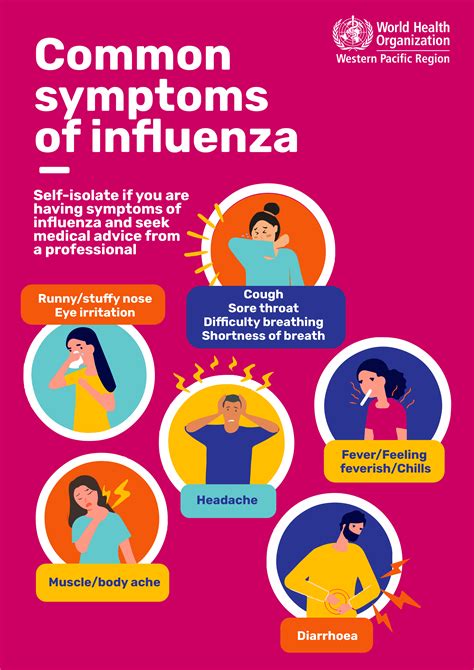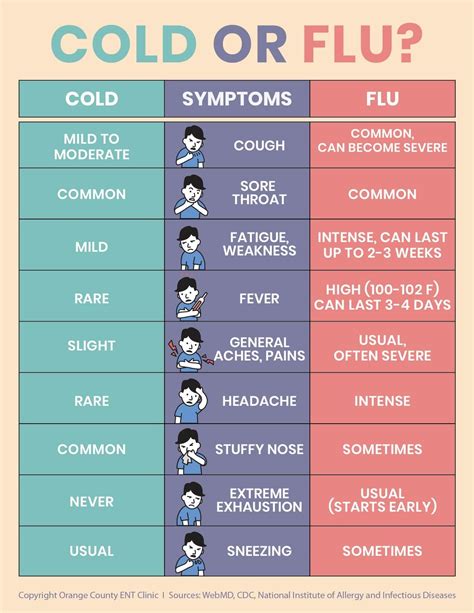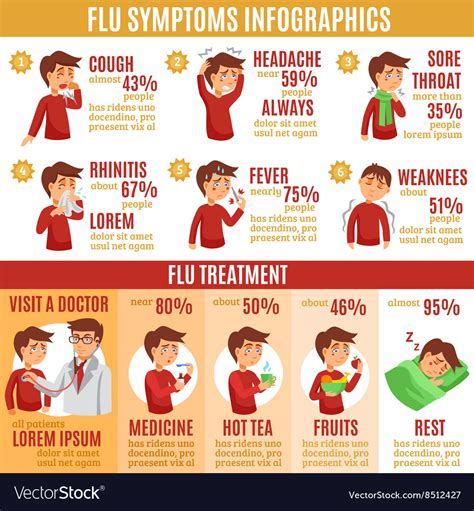Intro
Distinguish between flu and cold symptoms with our guide. Learn key differences in fever, cough, and fatigue to diagnose and treat effectively, alleviating congestion and sore throat.
When it comes to respiratory illnesses, two of the most common conditions that people often confuse with each other are the flu and the common cold. While both illnesses can cause similar symptoms, there are distinct differences between them. Understanding these differences is crucial for proper diagnosis, treatment, and prevention of complications. In this article, we will delve into the world of flu vs cold symptoms, exploring the causes, symptoms, diagnosis, treatment, and prevention of these two conditions.
The flu, also known as influenza, is a contagious respiratory illness caused by the influenza virus. It can cause mild to severe illness, and in some cases, it can lead to serious health complications, such as pneumonia, bronchitis, and sinus and ear infections. The common cold, on the other hand, is a viral infection that affects the upper respiratory system, including the nose, throat, and lungs. It is usually caused by rhinoviruses, coronaviruses, or adenoviruses.
Both the flu and the common cold can cause symptoms such as coughing, sneezing, runny or stuffy nose, sore throat, and fatigue. However, there are some key differences between the two conditions. For example, the flu tends to come on suddenly, with symptoms developing within 1-3 days of exposure to the virus. In contrast, the common cold tends to develop more gradually, with symptoms appearing over the course of several days.
Understanding Flu Symptoms

Types of Flu
There are three main types of flu: influenza A, influenza B, and influenza C. Influenza A and B are the most common types of flu and are responsible for the seasonal flu outbreaks. Influenza C is a milder form of the flu and is not typically associated with seasonal outbreaks. The flu can also be classified into different subtypes, such as H1N1 and H3N2, which are based on the surface proteins of the virus.Understanding Cold Symptoms

Causes of the Common Cold
The common cold is usually caused by rhinoviruses, coronaviruses, or adenoviruses. These viruses can be spread through the air, by touching contaminated surfaces, or by close contact with an infected person. The common cold can also be caused by other factors, such as allergies, environmental factors, and a weakened immune system.Diagnosis and Treatment

Home Remedies
There are several home remedies that can help relieve symptoms of the flu and the common cold. These include drinking plenty of fluids, such as water, tea, and soup, to stay hydrated, using a humidifier to relieve congestion, and taking over-the-counter medications, such as pain relievers and decongestants. It is also essential to practice good hygiene, such as washing your hands frequently, to prevent the spread of the virus.Prevention

Complications
Both the flu and the common cold can cause complications, such as pneumonia, bronchitis, and sinus and ear infections. In some cases, these complications can be severe and even life-threatening. It is essential to seek medical attention if you experience any of the following symptoms: difficulty breathing, chest pain or pressure, severe headache or confusion, severe sore throat, or fever above 103°F.Conclusion and Final Thoughts

What is the difference between the flu and the common cold?
+The flu and the common cold are two distinct conditions that can cause similar symptoms. The flu is a contagious respiratory illness caused by the influenza virus, while the common cold is a viral infection that affects the upper respiratory system.
How can I prevent the flu and the common cold?
+Preventing the flu and the common cold involves practicing good hygiene, such as washing your hands frequently, avoiding close contact with people who are sick, and getting vaccinated against the flu. Maintaining a healthy lifestyle, such as eating a balanced diet, exercising regularly, and getting enough sleep, can also help keep your immune system strong.
What are the complications of the flu and the common cold?
+Both the flu and the common cold can cause complications, such as pneumonia, bronchitis, and sinus and ear infections. In some cases, these complications can be severe and even life-threatening. It is essential to seek medical attention if you experience any symptoms of the flu or the common cold.
We hope this article has provided you with a comprehensive understanding of the flu vs cold symptoms. If you have any questions or comments, please do not hesitate to share them below. You can also share this article with your friends and family to help them understand the differences between the flu and the common cold. Remember to practice good hygiene, get vaccinated against the flu, and maintain a healthy lifestyle to reduce your risk of getting the flu or the common cold.
